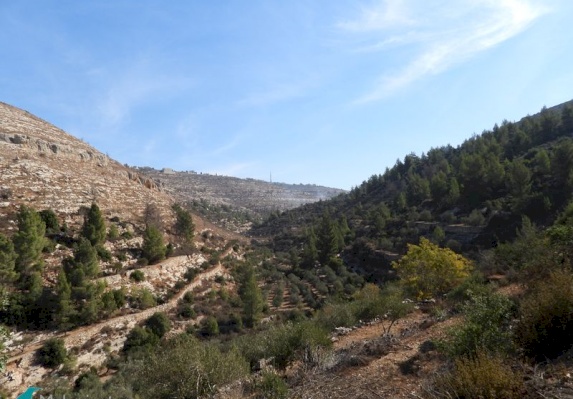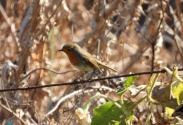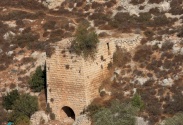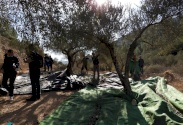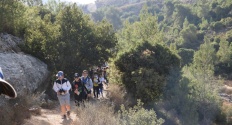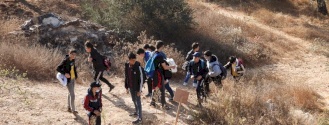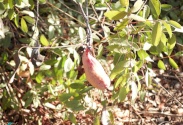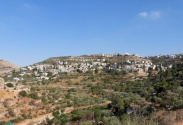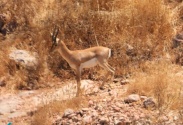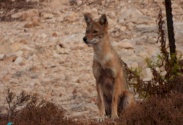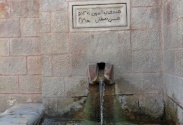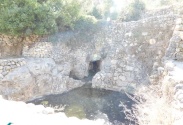Wadi Al-Makhrour – Battir Trail
Trail description: It starts from Wadi Al-Makhrour in the East to the village of Battir, passing through areas of world heritage. Assyrian water channels, collection pools, rock-cut tombs, archaeological sites, ancient agricultural stone terraces and springs give the area an outstanding universal value.
A tour through the trail:
The trail starts in west of Beit Jala city, about 2 km from its centre, in a valley with important natural and cultural values called Wadi Al-Makhrour. It was named by this name as a result of the waters flowing from the mountainous area of Al-Ain to the valley. At this point closest to Beit Jala, the people call it the Ain Cyprianos area. , which is a spring located in the place, and from here the visitor starts a very beautiful natural trail.
Towards the village of Battir to the west, Wadi al-Makhrour is part of a natural valley that extends from Wadi al-Walajah and al-Krimzan to the south of Jerusalem and connects with the Husan and Nahalin valleys. It is considered one of the most important areas of Bethlehem which is rich in biodiversity, the visitor can enjoy watching many species of animals, birds and trees. The valley and its nearby surroundings not only attract visitors at the present time but also attracted people in ancient times to establish villages from the middle Bronze Age to the early Islamic periods, whose ruins can be viewed and enjoy their cultural, historical and artistic values, especially the mosaic floors. The visitor walks through Wadi Al-Makhrour, and continues down the valley until Al-Qusayr area, overlooking the eastern entrance to Battir from Al-Makhrour area, and the visitor overlooks to the north a valley where the railway passes, (the first train passed in the village in 1895 AD, and the village was a station for it Even today, the Tel al-Rabie train passes through the village. The visitor arrives at Ain Amdan (Ain al-Amdan), and on its door there is a square pool, in which water flows from the rocks, and from it flows in channels to the fields. These canals were used extensively to irrigate crops until 1967, when they were gradually abandoned due to the shift of many farmers to be labour instead. Forest trees grow in the Al Ain region, and form a picturesque small oasis that pleases the viewers.
Karamat, in which women light candles on this day, it is well-known by its green dome. The village also includes old residential neighbourhoods, including the Seven Widows neighbourhood (sabai aramel) at the entrance to the village. The village is characterized by a wonderful rural scene that expresses a distinctive civil and natural heritage. Peter, with its natural and cultural scene, which includes terraces, agricultural walls, sites, monuments and water springs, the Palestinian Ministry of Tourism and Antiquities succeeded in listing Peter in 2014 on the list of World Heritage sites and the list of World Heritage sites in danger protected by the United Nations Cultural and Scientific Organization (UNESCO).
Biodiversity
Vegetation of the trail includes many species of trees such as olives, almonds, figs, apricots, walnuts, carob, oaks, etc., and annual plants such as mustard, anemones and chrysanthemums.
There are several species of birds, such as the blackbird that is distinguished by its songs in the morning hours, Robin, Song Thrush, the Palestinian sunbird, the bulbul, and the Syrian woodpecker.
Nearby: village of Battir (was inscribed in the UNESCO World Heritage Site, as “Land of Olives and Vines – Cutural Landscape of Southern Jerusalem, Battir”)

All rights reserved by: www.mahmiyat.ps ©

